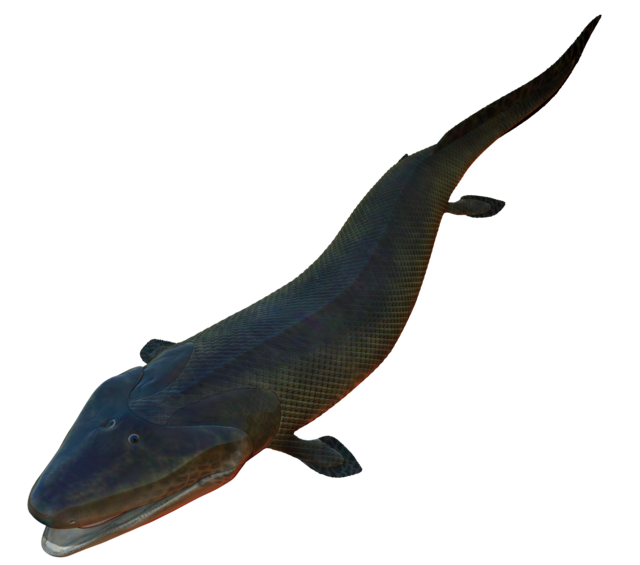
Besides number, there is a most captivating variety, and, in some animate things, a capacity for endless further variation within the species. Furthermore, amidst this variety, it is to be observed that there is an observable gradation, from things of a very simple composition to things more wonderfully complex, from small to large, from inanimate to intelligent, from physical to spiritual. Evolutionists see in this gradation evidence that the ‘higher forms’ of life developed from the ‘lower forms.’ What they ought to see is not that one thing evolved from another, but that all things came from the same Maker, who, like human artists, inclines to repeat and re-apply and develop the same ideas in one thing and another.
– Fr. James Wathen, Who Shall Ascend? Vol. II1 (96-97)
Among the many alleged proofs of Darwinism which have been set forth, the claim that so-called “transitional species”, prophesied by Charles Darwin in his book On the Origins of Species by Means of Natural Selection, or the Preservation of Favoured Races in the Struggle for Life have been successfully located in the fossil record is one of the most frequently cited. These “transitional species”, as the name implies, are meant to mark evolution from one species of animal to another through the presence of “undeveloped” limbs or organs in an animal. A link is then established between an earlier animal which this creature allegedly originated from, and an implied descendant animal which has more “developed” iterations of the traits seen in the “transitioning” animal. But if one observes the fossils in question and compares the extinct creatures they represent to modern equivalents, this argumentation falls apart, revealing itself to be a rather insidious example of the fallacy of accidental correlation.
In order to properly explain why this is the case, the fallacy of accidental correlation must first be defined:2
The mere fact that A and B are correlated over time does not alone show that A caused B or that B caused A. It might be that one is the cause of the other, or it might be that a third factor is the cause of both.
– Paul Herrick, Introduction to Logic (624)
Considering this, examine the curious case of Tiktaalik, a creature that is alleged by the paleontologists to have come into existence 375 million years, during the so-called “Late Devonian” period. On account of the presence of flippers and its amphibian appearance, it is said to be the common ancestor of all land animals because, as we are told, it was the very first animal to “accumulate” forelimbs that allowed movement on land in any capacity. Thus, it has been utilized as a poster child by evolutionists who use this animal to support their claim (who believe, like Lucretius of old) that man is descended from fish.

Paleontologist Ted Daeschler, of the lead researchers involved with the expedition that uncovered the remains of Tiktaalik stated in a 2006 interview about the animal:3
This is still a fish. And so many of its features tie it back to the way we expect fish to behave. It probably lived primarily in the water, probably in very shallow water. We find it in rocks which were deposited in stream systems.
And so we’re making the hypothesis that this animal was specialized for living in shallow stream systems, perhaps swampy habitats, perhaps even to some of the ponds. And maybe occasionally, using its very specialized fins, for moving up overland. And that’s what is particularly important here. The animal is developing features which will eventually allow animals to exploit land.
Despite the claim that this creature was in the process of “developing features” that would later lead to arms and legs in “later” animals, there is an animal still in existence which possesses very similar “developing” forelimbs and resides in the same environments that Tiktaalik once populated: the humble Mudskipper.

None would be so bold as to assert that this creature is a transitional species nor would they claim that its small flipper-like limbs, designed for the wetland environments in which it inhabits, are in any way “undeveloped” or “developing”. It is only reasonable to assert that Tiktaalik should be viewed likewise, yet it is not. Viewed in this light, the fables surrounding Tiktaalik raise questions which the establishment will either refuse to answer or, perhaps even worse, answer illogically:
Why was Tiktaalik in serious need of legs, when it could do perfectly well without them? Furthermore, what sense is there in the idea that the supposedly “fit” ancestors of Tiktaalik which exclusively resided in the ocean would need to develop limbs to crawl upon land, when the waters alone would have suited them well enough? And what use would the proto-limbs of Tiktaalik’s ancestors be to them?
What these paleontologists have done is not true science, for they have merely built the house of their ideas upon the sand of nonsensical presuppositions. When one views this creatures’ “specialized limbs” and other such features as antecedent to the features of “descendant” animals on account of a poorly thought-out genealogy, they are therefore guilty of an accidental correlation fallacy. And this is something true in the other organisms that have been cited as proofs of Darwin’s original postulation. Some might argue that “developing features” can still have utility to an organism while these same features are in development, but even if these persons are granted this—and this is quite something to grant—it does not address the counter-argument that to see similarities among the animals and to assert and categorize levels of ancestry and posterity based on such findings, and furthermore, the faulty geological theories of Lyell and his followers, is to make the aforementioned fallacy.
The correlations between these proposed “transitional” species to assumed “later” animals leaves out the possibility of a third factor being the true cause of these animals and their relatives. This third factor is Almighty God, who fashioned all the animals at the beginning of Creation, and thus as Father Wathen stated, share these similar traits on account of their Maker having re-applied similar designs and concepts across different species—none of which are incomplete or “evolving” into anything else.
- Wathen, Fr. James. Who Shall Ascend? Revised ed., Vol. II. The James F. Wathen Traditional Catholic Foundation, 2013.
- Herrick, Paul. Introduction to Logic. Oxford University Press, 2013.
- Daeschler, Ted. Interview by Jeffrey Brown. PBS, April 6, 2006. https://web.archive.org/web/20140122070745/http://www.pbs.org/newshour/bb/science/jan-june06/fossils_4-6.html.
